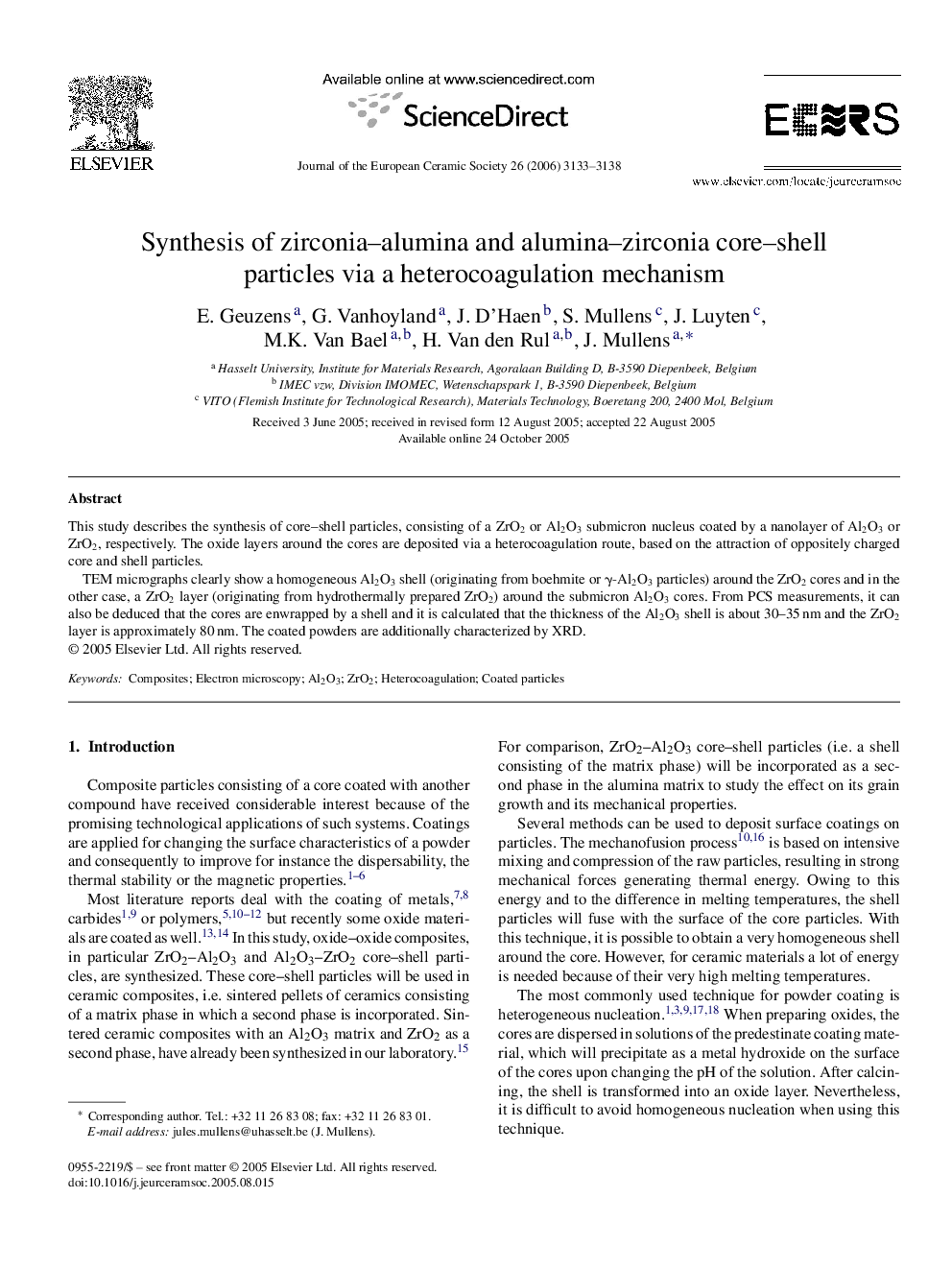| Article ID | Journal | Published Year | Pages | File Type |
|---|---|---|---|---|
| 1477343 | Journal of the European Ceramic Society | 2006 | 6 Pages |
This study describes the synthesis of core–shell particles, consisting of a ZrO2 or Al2O3 submicron nucleus coated by a nanolayer of Al2O3 or ZrO2, respectively. The oxide layers around the cores are deposited via a heterocoagulation route, based on the attraction of oppositely charged core and shell particles.TEM micrographs clearly show a homogeneous Al2O3 shell (originating from boehmite or γ-Al2O3 particles) around the ZrO2 cores and in the other case, a ZrO2 layer (originating from hydrothermally prepared ZrO2) around the submicron Al2O3 cores. From PCS measurements, it can also be deduced that the cores are enwrapped by a shell and it is calculated that the thickness of the Al2O3 shell is about 30–35 nm and the ZrO2 layer is approximately 80 nm. The coated powders are additionally characterized by XRD.
